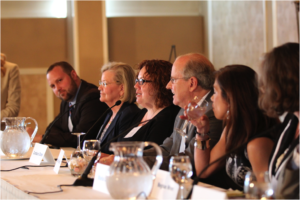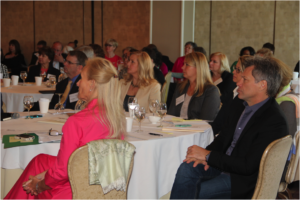Disaster Philanthropy Playbook

Council of New Jersey Grantmakers Responds to Superstorm Sandy
The day after Superstorm Sandy made landfall just outside of Atlantic City, New Jersey, the Council of New Jersey Grantmakers quickly mobilized to communicate with its members in order to understand the sheer magnitude of the damage and begin setting a course of action for response and recovery.
It would take weeks and months before the full scope of the destruction was known:
- More than 2.7 million NJ households and businesses were without power (some for up to 3 weeks), including over 1,000 schools;
- 127 shelters were open serving an estimated 7,000 residents;
- There were nearly 600 full or partial road closures;
- Regional mass transit operations experienced system-wide disruptions, including impacts to Hudson River/NYC crossings;
- More than 8,000 jobs were lost in November;
- Nearly 1,400 vessels were either sunken or abandoned in our waterways;
- Within the first 90 days, the State of New Jersey and its contractors removed over 2.5 million cubic yards of debris;
- More than 261,000 households registered for FEMA assistance. The estimated damage to housing in NJ was over $4 billion;
- Statistics for New York City and neighboring states were just as catastrophic as New Jersey’s.
In the hours immediately following the storm, the Council created a dedicated area on the CNJG website—Responding Post Sandy: Philanthropic Relief & Recovery—to inform grantmakers of national best practices and available resources, and formed a Post-Sandy listserve that enabled funders to quickly and in real-time share information, resources, strategies and news related to storm relief and recovery. Due to the vast and overwhelming needs of the affected communities, and the deep and widespread interest from the funding community, the listserve was open to all local and national grantmakers and regional associations, regardless of CNJG membership.
One week after the storm, the Council convened standing weekly conference calls (which came to be known as Post-Sandy Funder Briefings) during which grantmakers heard from policymakers, disaster relief and recovery experts and colleagues from around the country who had been through similar catastrophes. Nearly 70 guest speakers were featured on 25 calls and represented national philanthropic leaders, government officials, expert psychologists with experience in PTSD, planners and community redevelopment leaders, and representatives from NJ’s Voluntary Organizations Active in Disaster, among other local and statewide nonprofit leaders. During the calls, grantmakers were given an opportunity to ask questions and were encouraged to discuss and build upon their collective and individual efforts. The written summaries and audio recordings for each call are available on the Council’s website.
In the months after the storm, CNJG produced in-person programs and offered funders the rare opportunity to tour disaster-affected communities.

Two site visits—the first a tour of Atlantic coastal communities and the second a tour of urban communities in Northern New Jersey—featured more than two dozen guest speakers representing all areas of the recovery effort. Representatives from FEMA and local and state government joined Long Term Recovery Group leaders, city and state planners, environmental professionals, social services personnel, and faith-based leaders to address over philanthropic leaders. Several of the communities on the tours were off-limits to pedestrian and vehicular traffic, but a partnership with the State Police Office of Emergency Management enabled grantmakers to see the damage in order to fully grasp the communities’ needs. The Northern NJ site visit also included a tour of a Public Service Electric and Gas (PSEG) sub-power station which was flooded during the storm.

Following the site visits, CNJG hosted a briefing on housing, hunger and mental health recovery efforts and needs 18 months after the storm. Special guests included families who offered personal stories of being displaced from their homes and their long struggle to rebuild and recoup. Several Long Term Recovery Group leaders described ongoing challenges and recent positive outcomes.


At the Spring 2013 Conference for the Social Sector – Our Shared Road Ahead: Sandy and Beyond, the Council brought together local and national funders, providers and practitioners for a day of exploration, shared learning and discussion on disaster relief and recovery.
CNJG alongside the Foundation Center, Philanthropy New York and the Center for Disaster Philanthropy, produced Philanthropy & Hurricane Sandy: A Report on the Foundation & Corporate Response. The report examines the grantmaking response of foundations, corporations, and other institutional donors to the devastation wrought by Hurricane Sandy.
CNJG’s commitment to serve its community in the most robust manner led the way to the creation and development of the Disaster Philanthropy Playbook, in cooperation with the Center for Disaster Philanthropy and the Forum of Regional Associations of Grantmakers.
CNJG’s commitment to serve its community in the most robust manner led the way to the creation and development of the Disaster Philanthropy Playbook, in cooperation with the Center for Disaster Philanthropy and the Forum of Regional Associations of Grantmakers. This partnership harnesses the learning from Superstorm Sandy and a host of previous national disasters and emergencies. CNJG will always be grateful to its colleagues nationwide who responded to the call for help and freely shared their time and knowledge of disaster response in the weeks, months and years since Sandy struck New Jersey.